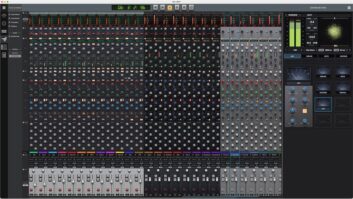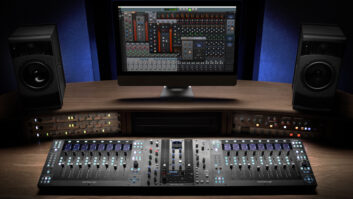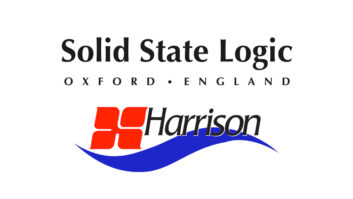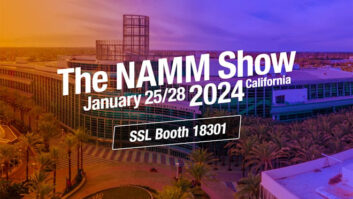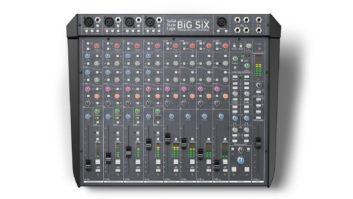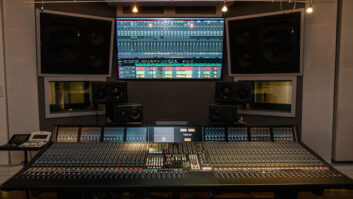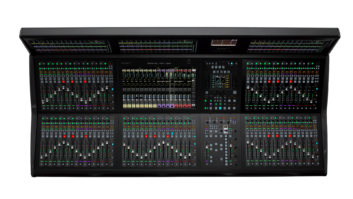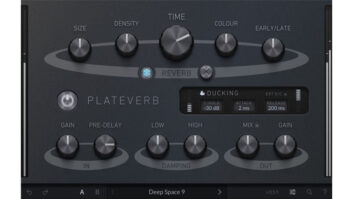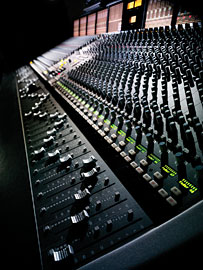

Duality, SSL’s newest large-frame analog console, not only melds Legacy E, G and K analog components with key components of the C Series and AWS consoles, but also interfaces directly with a connected DAW system through its own controller layer for mixing, recording, editing and plug-in parameter manipulation. You might say Duality is DAW-agnostic: It works with all popular software-based DAWs, using both HUI and Mackie Control Universal (MCU) emulation protocols.
The unique channel strip “split” design allows for dividing any desired channel strip’s analog processing between two separate signal paths, to and from the DAW. For instance, you can record using the DAW system like a multitrack tape deck and then switch to Duality’s controller for elaborate hybrid mixes. You can rely on the DAW’s “in-the-box” editing and processing with Duality’s analog summing, processing and optional automation with Total Recall™.
DUALITY PHYSICALITY
Duality is available in three console sizes: 48, 72 and 96 channels. You can order the console with 12-degree wings, a producer’s desk and an integrated or remote patchbay.
The board’s analog side combines SSL’s SuperAnalogue capacitor-less, servo-coupled and fully balanced design from the XL 9000K Series with a “best-of” list of features from the venerable E and G Series consoles, as well as new features including the Variable Harmonic Drive™ (VHD) microphone preamp section. The VHD emulates either the second-harmonic (tube) or third-harmonic distortion (transistor) in any combination or amount using the input and drive controls. This section is available for either microphone inputs or DAW tracks on playback.
On the controller side, you’ll find features from the AWS 900+ and the 480 TFT channel displays of the C Series digital consoles. Surface-mount technology is used throughout, and all of the channel strips and other modules easily slide out after you remove two or three screws. Each console section is individually powered by its own built-in power supply; this is a “plug-and-play” board. The 48-channel model draws less than 15 amps from a single 110VAC circuit.
For superclean installations, all connections to Duality are lined up across the back of the console, where a convenient cable trough is provided. The console’s end supports are hollow, allowing wiring to be passed to sub-floor conduits. Connectors are standard: XLRs are used for mic/line inputs; monitor/cue system outputs, external stereo and 5.1 sources; DAW sends and returns; and bus outputs via DB-25 connectors. Sixteen MIDI ports provide HUI or Mackie controller interface and MTC/MMC paths. Duality also has an RJ45 jack for 100baseT Ethernet connectivity and its own IP address for network access and possible future remote diagnostics.
SCREENING PROCESS
On a 48-channel Duality, each of the eight impressive TFT displays shows the settings for a group of six channel strips. When a channel strip is selected at Central Routing, that channel’s section on the TFT is highlighted in green. Stereo and multitrack bus assignment, VU level, automation fader level and the associated DAW track status (selected, record or edit) are always visible.

For a 48-channel board, each of the eight TFT displays shows the settings for a group of six channel strips.
LED meters used in the K, G and E Series dynamics sections are replaced by larger and higher-resolution versions on the TFT. The TFTs schematically show the signal chain routing order and any active processing on both paths. The new Eyeconix feature offers a library of icons and images to substitute for track names. These show up in place of the TFT’s 24-bus assignment area. Eyeconix images, track names and projects are managed using a Java application called Duality Remote; it runs on any computer connected to Duality’s Ethernet port.
In the center section, the Plug-In Editor interface uses a smaller, inset TFT screen and is similar in function to the AWS 900+. This screen doubles as the interface for Total Recall and fader/mute automation. For those jumping between platforms, the Master DAW control panel comes with software templates for Pro Tools, Nuendo, Cubase, Digital Performer, Logic and SONAR.
DYNAMICS AND EQ
The dynamics section is nearly identical to that of the 9000K Series (but adds sidechain listen and variable hold to the gate/expander) and to the company’s XLogic range of outboard processors. Next are the third-order, 18dB/octave highpass and second-order, 12dB/octave lowpass filters, followed by the 4-band parametric equalizer, which can be switched between E and G modes.
Channel panning on the Duality is accomplished using the L/R, front/rear Focus and LFE knobs. The Focus knob continuously varies panning between phantom L/R imaging and hard LCR panning. This control solves myriad panning and routing problems that can occur during surround sound mixing. The LFE knob sets the amount of channel output feeding the LFE bus. At the bottom of the channel strip is the D-Pot rotary controller and a 100mm channel motor fader. Either the fader or the D-Pot can be used for analog channel record level if you want to use the other for DAW playback.
SMOOTH OPERATION
The Master Fader, like all of Duality’s large faders, is a smooth-feeling, 100mm motorized unit. The master fader uses three 12-bit (36-bit resolution) multiplying digital/analog converters (MDACs) to control all three stereo buses. MDACs are used throughout to control analog audio.
The main output function controls the three stereo buses, which also double as a full 5.1 surround bus. Mix A, B and C are represented in a matrix. Each stereo bus pair has a switchable insert point — either pre- or post-master fader. You can also choose which stereo pair is to be compressed and/or summed together for master output. With so many output capabilities, deriving simultaneous, specialized multiple mix stems is a breeze.
The eight group faders work as master/slave like the old-style SSL VCA faders or in Fader Link mode, where fader and/or mute activity on one is replicated on all other linked faders. A good-working DAW trackball is built in, but there is no QWERTY keyboard.
BUS COMPRESSION, MONITORING
The main bus compressor (as well as all of the channel dynamics) uses VCAs in Duality because it’s the same design found on the SL4000 console. It can be used on any or all of the stereo buses, or as a 6-channel surround compressor. You can also include LFE channel information in the sidechain (or not), and a clever sidechain-summing scheme can be substituted for the typical “loudest-bus-in-the-mix” surround sound sidechain derivation.
A digital readout lets you calibrate the large monitor knob (it goes to 11!) using the onboard pink/white-noise generator. There are three console monitoring modes: mono, stereo and 5.1, with two stereo and two 5.1 loudspeaker monitor choices. Programmable fold-down choices switch from 5.1 to stereo to mono, and four external 5.1 monitor sources like DVDs or SACDs are possible.
Solo options are plentiful, with destructive solo-in-place, AFL, PFL, PFM (where PFL signals are fed to the small speakers) and ALT, where pushing another Solo button resets previously solo’d channels, MOM (momentary solo) and my fave, SIF, or solo in front.
LET’S DO A MIX!
I began a surround remix of a 48-track Pro Tools production I had mixed inside the box for a stereo CD release. Because all Pro Tools automation moves show up on the controller layer, it’s easy to start a mix inside Pro Tools and finish it on Duality. I could retain my extensive breakpoint automation vocal moves and my “re-arrangement” mutes to tweak on Duality. Essentially, all I did was stem out the existing mix to 5.1 channels, re-adjust balances and massage the ambient effects.
There are so many ways to set up a session, but changing to a different DAW system channel setup requires rebooting Duality — it takes five seconds. I opted to split the console in half: The left side had 24 physical analog outputs from Pro Tools and the right side was a 24-channel controller with its scribble strip showing the session track names. As a first-time user, I found this split setup easier. I was never confused if I was changing something inside of Pro Tools or on Duality. I never had to think if I was changing stem 23 or track 23 in Pro Tools.
HUI protocol provides access to banks of up to 32 channels, and I had access to all Pro Tools channels (65 total) and effect returns by just switching banks of those 24 controller channel strips using the left/right arrow button on the Master Control panel.
With a minimal learning curve, mixing on Duality is a breeze; just like a 9000K, everything happens in the best way sonically. The default E Series EQ works the same as always — great 99 percent of the time. That EQ is the sound of SSL I’ve always liked: It can be aggressive or mellow. The G EQ mode applied to a tom-tom track made it poke out of the drum mix to which I had assigned to four analog channels.
On kick and snare channels, the gate and compressor worked better than a 9000K because I could read the meters more precisely on the TFTs. Gate “rattling,” when the gate jumps quickly between being open and closed, is one of my pet peeves. I usually go into the Edit page and chop/crossfade the tom-tom tracks if I have excessive cymbal spill into them. The new gate asymmetrical threshold scheme is a winner for me for toms and noisy guitar amp tracks — it’s like an intelligent agent working for you, keeping the gate working smoothly. I especially like all the metering visible. The 24 analog DAW output levels shown on the left side and the 24 DAW track levels on the controller side are much better than trying to pick them out on the Pro Tools Mixer window. I found that once I got set up and rolling, I hardly ever looked at the Pro Tools screens when mixing — and that is a good thing!
Selecting Drive In and winding up the mic preamp gain put that channel into loud overload using VHD. After backing the channel knob down so I could A/B at the comparable levels, I was sold. VHD sounds especially good on bass and electric guitars to add more “hair.” I used VHD on DI guitars: I removed the guitar amp simulator plug-ins in Pro Tools, and VHD sounded more realistic.
I also liked that all Solo buttons follow their exact purpose. Solo’ing on the controller side solo’d in Pro Tools while soloing on the analog side solo’d the console — sweet! Being immediately able to hear the difference between tracks panned LCR or phantom L/R is something no surround mixer/producer should be without. I also liked the LFE Blend control. You can look at the LFE VU meter and add a track to the LFE bus and see if that track has any (below 80 Hz) information to contribute. If not, I would not use LFE blend for that track.
DUALITY REALITY
Duality caters to the DAW generation of music-makers with its smart controller layer coupled with classic analog processing/summing. It incorporates the best of SSL’s C Series, AWS and venerable E, G and K consoles. Amazingly, it was an easy transition from my past SSL experience and did not require any change in my in-the-box DAW workflow — I kept all previous work and went on to elevate the mix further using a modern, top-notch-sounding analog console. Price: 48-channel, $275,000.
Solid State Logic, 212/315-1111, www.solid-state-logic.com.
Barry Rudolph is an L.A.-based recording engineer. Visit him at
www.barryrudolph.com.

WATCH:
SSL Duality Video
